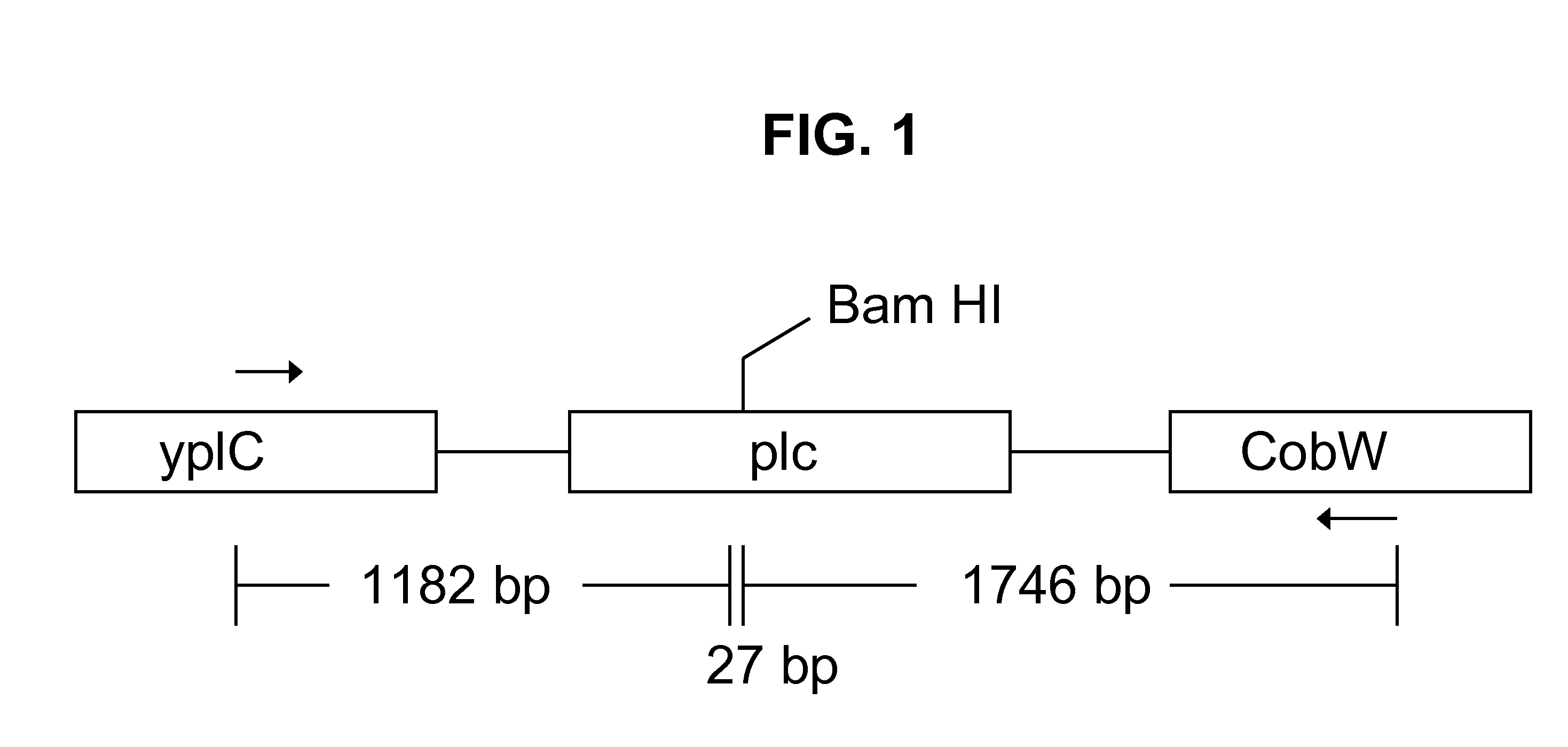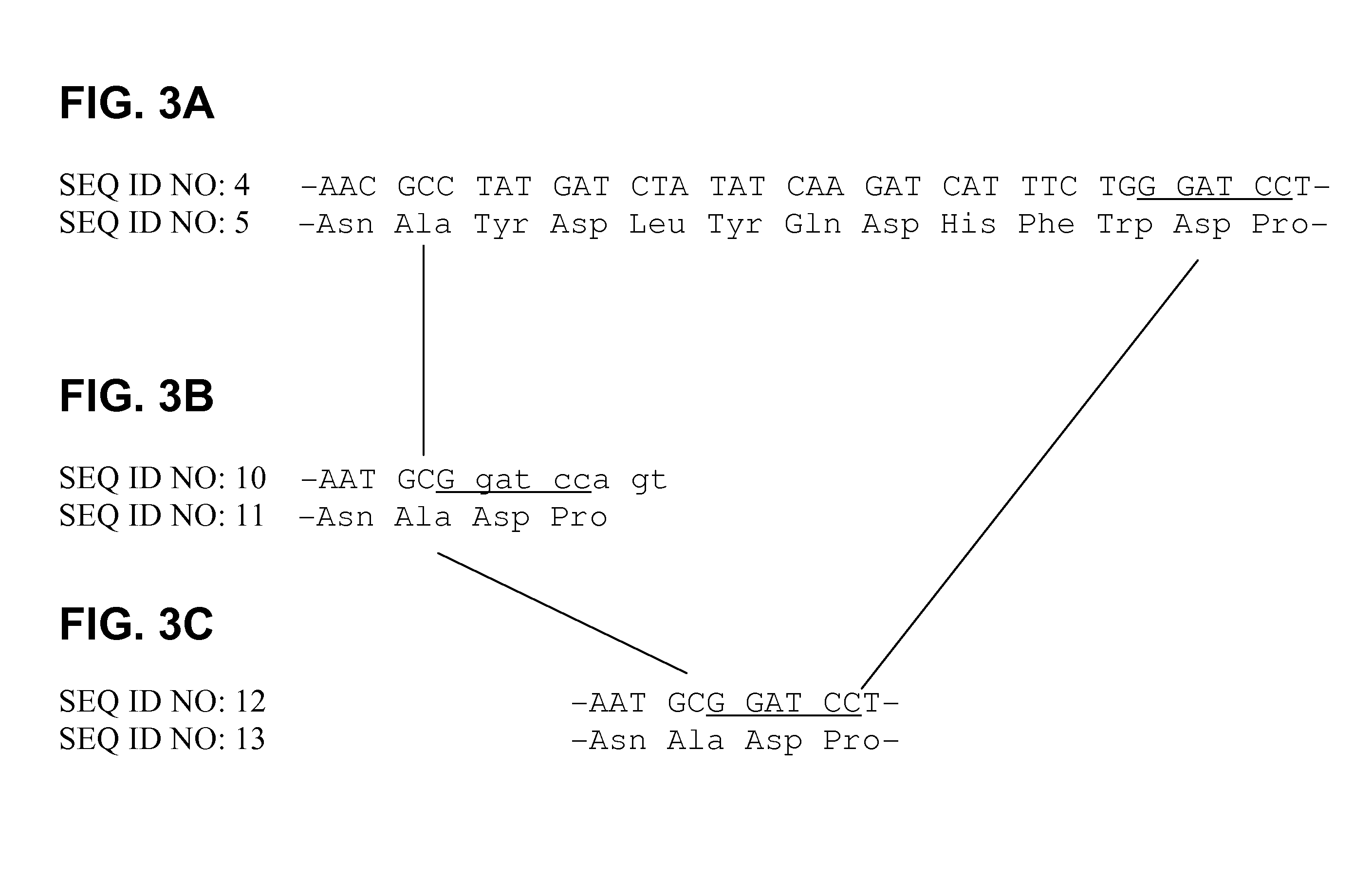Recombinant attenuated clostridium organisms and vaccine
a technology of clostridium organisms and clostridium bacteria, which is applied in the field of attenuated clostridium organisms, can solve the problems of affecting the productivity of flocks, serious economic burden of agricultural industry, and significant problem of enteritis necroticans,
- Summary
- Abstract
- Description
- Claims
- Application Information
AI Technical Summary
Benefits of technology
Problems solved by technology
Method used
Image
Examples
example 1
C. Perfringens Alpha-Toxin Deletant Homology Vector
[0098]A homology plasmid vector 1162-55-20 useful in the construction of C. perfringens alpha-toxin deletants was created. The plasmid incorporates several important elements; the replication region from the E. coli plasmid pUC1 8; the C. perfringens chloramphenicol (catP) and erythromycin (ermBP) resistance genes (both of which are also expressed in E. coli); and a C. perfringens alpha-toxin gene (plc) inactivated by a specific deletion of 9 amino acids. Plasmid 1162-55-20 was created in several steps, as follows.
[0099]First the plc gene was cloned from a recent avian isolate of C. perfringens (strain CP6). The sequence of C. perfringens strain 13 (Genbank NC 003366; SEQ ID NO: 2) was used to design oligonucleotide primers to be used in the cloning of the plc gene. These and all subsequent primers were obtained commercially form Sigma Genosys, Woodlands, Tex. The upstream primer located within the yplc gene (CPE0035), 5′ AGCTGCATA...
example 2
Construction of Clostridium Perfringens Recombinant CPERF001
[0103]The deleted version of the plc gene constructed in Example 1 was introduced into C. perfringens using the following strategy. The homology vector 1162-55.20 is termed a C. perfringens “suicide plasmid” because its C. perfringens origin of replication has been removed.
[0104]When this plasmid was transformed into C. perfringens it is unable to replicate and does not survive. However, if the transformed bacteria are placed under chormaphenicol and / or erythromycin selection, the plasmid DNA can be forced to recombine into the bacterial genome via homology to the plc gene. The resulting recombinant bacteria is termed an integrant. The integrant contained a copy of the introduced homology vector that was the plc gene locus. Thus, the resulting integrant contained two copies of the original normal copy, and the introduced deleted version. The introduced resistance genes were located between the two copies of the plc gene. Wh...
example 3
Construction of Clostridium Perfringens Recombinant CPERF002
[0116]In order to compensate for the lower transformation efficiency of C. perfringens strain 29 (see Table 1, supra) a new homology vector was constructed. The new vector incorporated C. perfringens sequences cloned directly from the strain 29 genome. This was predicted to result in a more efficient recombination step. The new vector was 1192-38.3 created as follows.
[0117]In the first step the E. coli replication region and the C. perfringens resistance genes were cloned from shuttle plasmid pJIR418 (Sloan et al, Plasmid 27, 207 (1992); Genebank M77169). Plasmid pJIR418 was digested with restriction enzyme Ndel. Ligation of the large fragment produced plasmid 1192-23.1. This plasmid lacks a C. perfringens origin of replication, but unlike the plasmid 1162-45.1 that was constructed in Example 1, it retains the entire multiple cloning site of pJIR418
[0118]In the next step the C-terminal half of the plc gene was sub-cloned in...
PUM
| Property | Measurement | Unit |
|---|---|---|
| volume | aaaaa | aaaaa |
| volume | aaaaa | aaaaa |
| pH | aaaaa | aaaaa |
Abstract
Description
Claims
Application Information
 Login to View More
Login to View More - R&D
- Intellectual Property
- Life Sciences
- Materials
- Tech Scout
- Unparalleled Data Quality
- Higher Quality Content
- 60% Fewer Hallucinations
Browse by: Latest US Patents, China's latest patents, Technical Efficacy Thesaurus, Application Domain, Technology Topic, Popular Technical Reports.
© 2025 PatSnap. All rights reserved.Legal|Privacy policy|Modern Slavery Act Transparency Statement|Sitemap|About US| Contact US: help@patsnap.com



